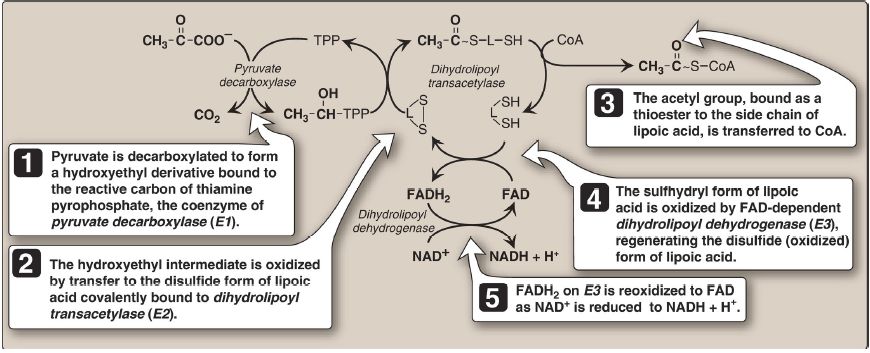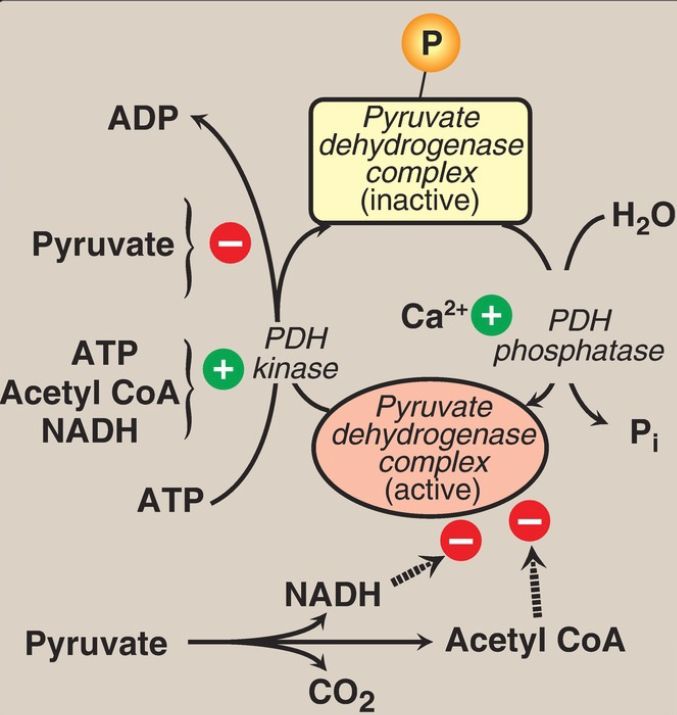

النبات

مواضيع عامة في علم النبات

الجذور - السيقان - الأوراق

النباتات الوعائية واللاوعائية

البذور (مغطاة البذور - عاريات البذور)

الطحالب

النباتات الطبية


الحيوان

مواضيع عامة في علم الحيوان

علم التشريح

التنوع الإحيائي

البايلوجيا الخلوية


الأحياء المجهرية

البكتيريا

الفطريات

الطفيليات

الفايروسات


علم الأمراض

الاورام

الامراض الوراثية

الامراض المناعية

الامراض المدارية

اضطرابات الدورة الدموية

مواضيع عامة في علم الامراض

الحشرات


التقانة الإحيائية

مواضيع عامة في التقانة الإحيائية


التقنية الحيوية المكروبية

التقنية الحيوية والميكروبات

الفعاليات الحيوية

وراثة الاحياء المجهرية

تصنيف الاحياء المجهرية

الاحياء المجهرية في الطبيعة

أيض الاجهاد

التقنية الحيوية والبيئة

التقنية الحيوية والطب

التقنية الحيوية والزراعة

التقنية الحيوية والصناعة

التقنية الحيوية والطاقة

البحار والطحالب الصغيرة

عزل البروتين

هندسة الجينات


التقنية الحياتية النانوية

مفاهيم التقنية الحيوية النانوية

التراكيب النانوية والمجاهر المستخدمة في رؤيتها

تصنيع وتخليق المواد النانوية

تطبيقات التقنية النانوية والحيوية النانوية

الرقائق والمتحسسات الحيوية

المصفوفات المجهرية وحاسوب الدنا

اللقاحات

البيئة والتلوث


علم الأجنة

اعضاء التكاثر وتشكل الاعراس

الاخصاب

التشطر

العصيبة وتشكل الجسيدات

تشكل اللواحق الجنينية

تكون المعيدة وظهور الطبقات الجنينية

مقدمة لعلم الاجنة


الأحياء الجزيئي

مواضيع عامة في الاحياء الجزيئي


علم وظائف الأعضاء


الغدد

مواضيع عامة في الغدد

الغدد الصم و هرموناتها

الجسم تحت السريري

الغدة النخامية

الغدة الكظرية

الغدة التناسلية

الغدة الدرقية والجار الدرقية

الغدة البنكرياسية

الغدة الصنوبرية

مواضيع عامة في علم وظائف الاعضاء

الخلية الحيوانية

الجهاز العصبي

أعضاء الحس

الجهاز العضلي

السوائل الجسمية

الجهاز الدوري والليمف

الجهاز التنفسي

الجهاز الهضمي

الجهاز البولي


المضادات الميكروبية

مواضيع عامة في المضادات الميكروبية

مضادات البكتيريا

مضادات الفطريات

مضادات الطفيليات

مضادات الفايروسات

علم الخلية

الوراثة

الأحياء العامة

المناعة

التحليلات المرضية

الكيمياء الحيوية

مواضيع متنوعة أخرى

الانزيمات
Acetyl CoA Production
المؤلف:
Denise R. Ferrier
المصدر:
Lippincott Illustrated Reviews: Biochemistry
الجزء والصفحة:
19-9-2021
2434
Acetyl CoA Production
In the TCA cycle, oxaloacetate (OAA) is first condensed with an acetyl group from acetyl coenzyme A (CoA) and then is regenerated as the cycle is completed . Two carbons enter the cycle as acetyl CoA and two leave as CO2. Therefore, the entry of one acetyl CoA into one round of the TCA cycle does not lead to the net production or consumption of intermediates.
A. Acetyl CoA production
The major source of acetyl CoA for the TCA cycle is the oxidative decarboxylation of pyruvate by the multienzyme pyruvate dehydrogenase complex (PDH complex, or PDHC). However, the PDHC (described below) is not a component of the TCA cycle. Pyruvate, the end product of aerobic glycolysis, is transported from the cytosol into the mitochondrial matrix by the pyruvate mitochondrial carrier of the inner mitochondrial membrane. In the matrix, the PDHC converts pyruvate to acetyl CoA.
[Note: Fatty acid oxidation is another source of acetyl CoA .]
1. PDHC component enzymes: The PDHC is a protein aggregate of multiple copies of three enzymes, pyruvate decarboxylase ([E1] sometimes called pyruvate dehydrogenase), dihydrolipoyl transacetylase (E2), and dihydrolipoyl dehydrogenase (E3). Each catalyzes a part of the overall reaction (Fig. 1). Their physical association links the reactions in proper sequence without the release of intermediates. In addition to the enzymes participating in the conversion of pyruvate to acetyl CoA, the PDHC also contains two regulatory enzymes, pyruvate dehydrogenase kinase (PDH kinase) and pyruvate dehydrogenase phosphatase (PDH phosphatase).
 Figure 1: Mechanism of action of the enzymes (E) of the pyruvate dehydrogenase complex. [Note: All the coenzymes of the complex, except for lipoic acid, are derived from vitamins. TPP is from thiamine, FAD from riboflavin, NAD from niacin, and CoA from pantothenic acid.] CO2 = carbon dioxide; TPP = thiamine pyrophosphate; L = lipoic acid; CoA = coenzyme A; FAD(H2) and NAD(H) = flavin and nicotinamide adenine dinucleotides; ~ = high-energy bond.
Figure 1: Mechanism of action of the enzymes (E) of the pyruvate dehydrogenase complex. [Note: All the coenzymes of the complex, except for lipoic acid, are derived from vitamins. TPP is from thiamine, FAD from riboflavin, NAD from niacin, and CoA from pantothenic acid.] CO2 = carbon dioxide; TPP = thiamine pyrophosphate; L = lipoic acid; CoA = coenzyme A; FAD(H2) and NAD(H) = flavin and nicotinamide adenine dinucleotides; ~ = high-energy bond.
2. Coenzymes: The PDHC contains five coenzymes that act as carriers or oxidants for the intermediates of the reactions shown in Figure 1. E1 requires thiamine pyrophosphate (TPP), E2 requires lipoic acid and CoA, and E3 requires FAD and NAD+. [Note: TPP, lipoic acid, and FAD are tightly bound to the enzymes and function as coenzymes–prosthetic groups .]
Deficiencies of thiamine or niacin can cause serious central nervous system problems. This is because brain cells are unable to produce sufficient ATP (via the TCA cycle) if the PDHC is inactive. Wernicke-Korsakoff, an encephalopathy-psychosis syndrome due to thiamine deficiency, may be seen with alcohol abuse .
3. Regulation: Covalent modifications by the two regulatory enzymes of the PDHC alternately activate and inactivate E1. PDH kinase phosphorylates and inactivates E1, whereas PDH phosphatase dephosphorylates and activates E1 (Fig. 2). The kinase itself is allosterically activated by ATP, acetyl CoA, and NADH. Therefore, in the presence of these high-energy products, the PDHC is turned off. [Note: It is actually the rise in the ATP/ADP (adenosine diphosphate), NADH/NAD+, or acetyl CoA/CoA ratios that affects enzymic activity.] Pyruvate is a potent inhibitor of PDH kinase. Therefore, if pyruvate concentrations are elevated, E1 will be maximally active. Calcium (Ca2+) is a strong activator of PDH phosphatase, stimulating E1 activity. This is particularly important in skeletal muscle, where Ca2+ release during contraction stimulates the PDHC and, thus, energy production. [Note: Although covalent regulation by the kinase and phosphatase is primary, the PDHC is also subject to product (NADH and acetyl CoA) inhibition.]

Figure 2: Regulation of pyruvate dehydrogenase (PDH) complex. = phosphate [ denotes product inhibition.]
4. Deficiency: A deficiency of the α subunits of the tetrameric E1 component of the PDHC, although very rare, is the most common biochemical cause of congenital lactic acidosis. The deficiency results in a decreased ability to convert pyruvate to acetyl CoA, causing pyruvate to be shunted to lactate via lactate dehydrogenase . This creates particular problems for the brain, which relies on the TCA cycle for most of its energy and is particularly sensitive to acidosis. Symptoms are variable and include neurodegeneration, muscle spasticity, and, in the neonatal-onset form, early death. The gene for the α subunit is X linked, and because both males and females may be affected, the deficiency is classified as X-linked dominant. Although there is no proven treatment for PDHC deficiency, dietary restriction of carbohydrate and supplementation with thiamine may reduce symptoms in select patients.
Leigh syndrome (subacute necrotizing encephalomyelopathy) is a rare, progressive, neurodegenerative disorder caused by defects in mitochondrial ATP production, primarily as a result of mutations in genes that encode proteins of the PDHC, the ETC, or ATP synthase. Both nuclear and mitochondrial DNA can be affected.
5. Arsenic poisoning: As previously described (see p. 101), pentavalent arsenic (arsenate) can interfere with glycolysis at the glyceraldehyde 3-phosphate step, thereby decreasing ATP production. However, arsenic poisoning is due primarily to inhibition of enzyme complexes that require lipoic acid as a coenzyme, including PDH, α-ketoglutarate dehydrogenase , and branched-chain α-keto acid dehydrogenase Arsenite (the trivalent form of arsenic) forms a stable complex with the thiol (−SH) groups of lipoic acid, making that compound unavailable to serve as a coenzyme. When it binds to lipoic acid in the PDHC, pyruvate (and, consequently, lactate) accumulates. As with PDHC deficiency, this particularly affects the brain, causing neurologic disturbances and death.
 الاكثر قراءة في الكيمياء الحيوية
الاكثر قراءة في الكيمياء الحيوية
 اخر الاخبار
اخر الاخبار
اخبار العتبة العباسية المقدسة

الآخبار الصحية















 قسم الشؤون الفكرية يصدر كتاباً يوثق تاريخ السدانة في العتبة العباسية المقدسة
قسم الشؤون الفكرية يصدر كتاباً يوثق تاريخ السدانة في العتبة العباسية المقدسة "المهمة".. إصدار قصصي يوثّق القصص الفائزة في مسابقة فتوى الدفاع المقدسة للقصة القصيرة
"المهمة".. إصدار قصصي يوثّق القصص الفائزة في مسابقة فتوى الدفاع المقدسة للقصة القصيرة (نوافذ).. إصدار أدبي يوثق القصص الفائزة في مسابقة الإمام العسكري (عليه السلام)
(نوافذ).. إصدار أدبي يوثق القصص الفائزة في مسابقة الإمام العسكري (عليه السلام)


















